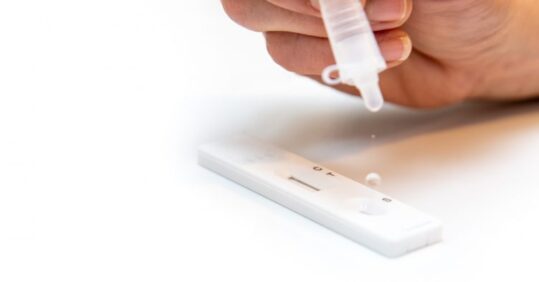Lateral flow tests more accurate than previously thought

Lateral flows tests (LFTs) are more accurate than previously reported, and their results should not be directly compared to results from PCR tests, according to a recent study.
Scientists at University College London (UCL), who led the research, found LFTs can detect the highest number of people at risk of transmitting Covid-19. The results show LFTs to be more than 80% effective at detecting any level of Covid-19 infection and likely 90% effective at detecting those who are most infectious, a much higher level of accuracy than previous studies have suggested.
Related Article: ‘Patients not prisoners’: Palliative care nursing behind bars
The authors found that LFTs are a reliable public health tool in stopping the spread of the virus. The results were published in Clinical Epidemiology.
Professor Michael Mina, a co-author of the paper from Harvard School of Public Health, said: ‘There is a spectrum of infectious amounts of the Covid-19 virus and we show that LFTs are likely to detect cases 90-95% of the time when people are at their most infectious.’
He added: ‘The tests could achieve even 100% sensitivity when viral loads are at their peak and therefore catch nearly everyone who is currently a serious risk to public health.’
LFTs work differently from polymerase chain reaction (PCR) tests, diagnosing individuals shedding Covid-19 antigens rather than detecting genetic material and diagnosing infection as PCR tests do. The researchers state that the two tests are ‘not reporting against a gold standard of equivalent measurements.’
Related Article: NHSE confirms dates and eligibility for autumn Covid and flu jabs
LFT sensitively has previously been calculated by the ability of LFTs to pick up the same results as the PCR tests when simultaneous testing has taken place. Re-examining the data from these studies, the researchers present a formula for calibrating the sensitivity of LFTs, which takes into account the differences between the tests and the biology of Covid-19.
In a study of asymptomatic testing in Liverpool, the sensitivity and specificity of the LFTs was found to be 40%. Taking account of the test differences and virus biology, the UCL led team showed that the sensitivity of LFTs was more likely 80%.
Related Article: QICN bids farewell to Dr Crystal Oldman as she retires from CEO role
According to lead author, Professor Irene Petersen from UCL, comparing the two tests without taking account of their differences is like ‘comparing apples and oranges’. She added: ‘It is most likely that if someone’s LFT is negative, but their PCR is positive, then this is because they are not at peak transmissible stage.’
Professor Petersen stated: ‘As LFTs are becoming widely used in schools, workplaces and for admittance to venues such as those used for large events, it is important that health professionals and the public have clear information about the operating characteristics of the tests. We have demonstrated that the absolute sensitivity to detect SARS-CoV-2 antigens is likely high with LFTs.’

See how our symptom tool can help you make better sense of patient presentations
Click here to search a symptom




